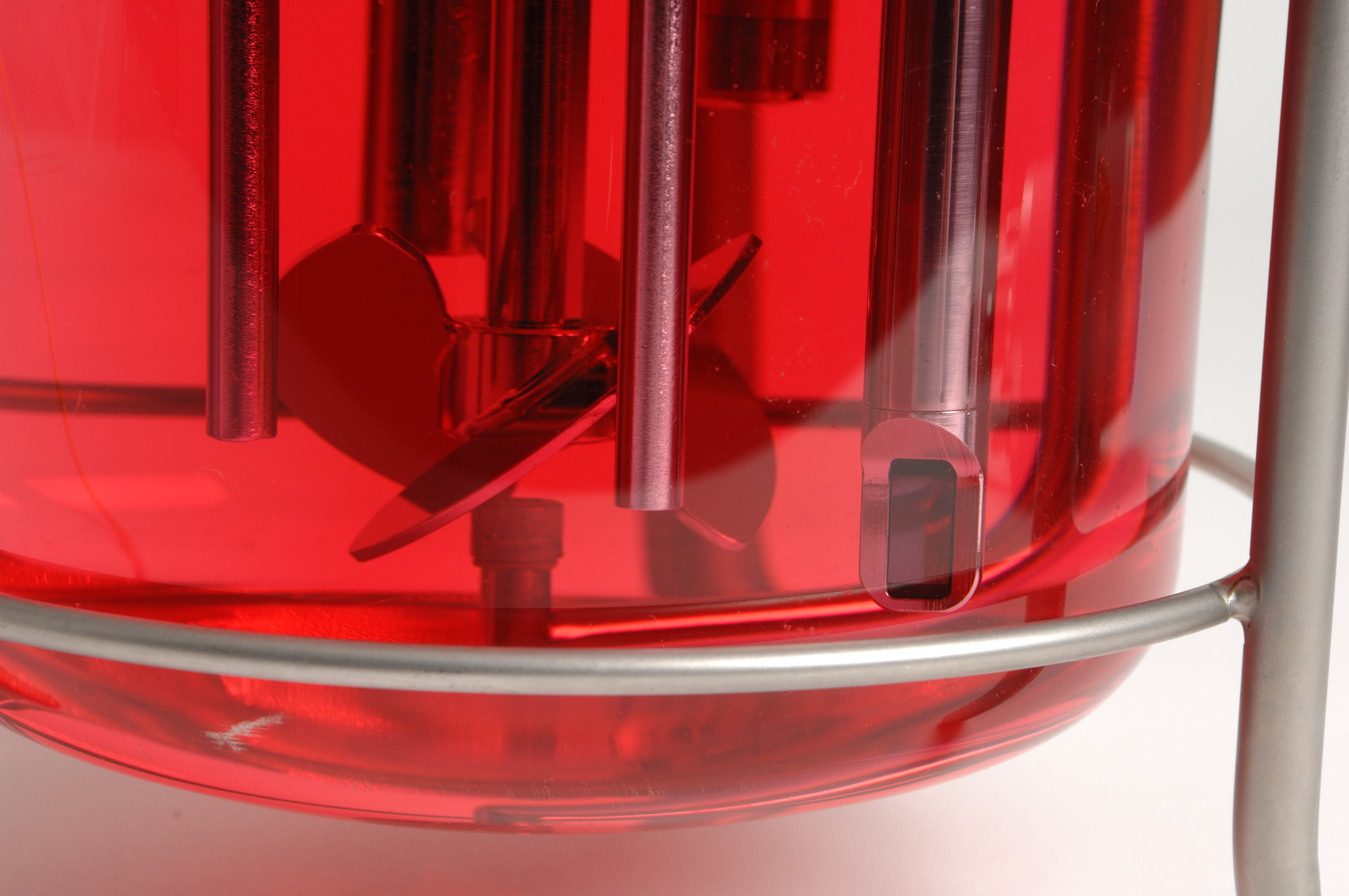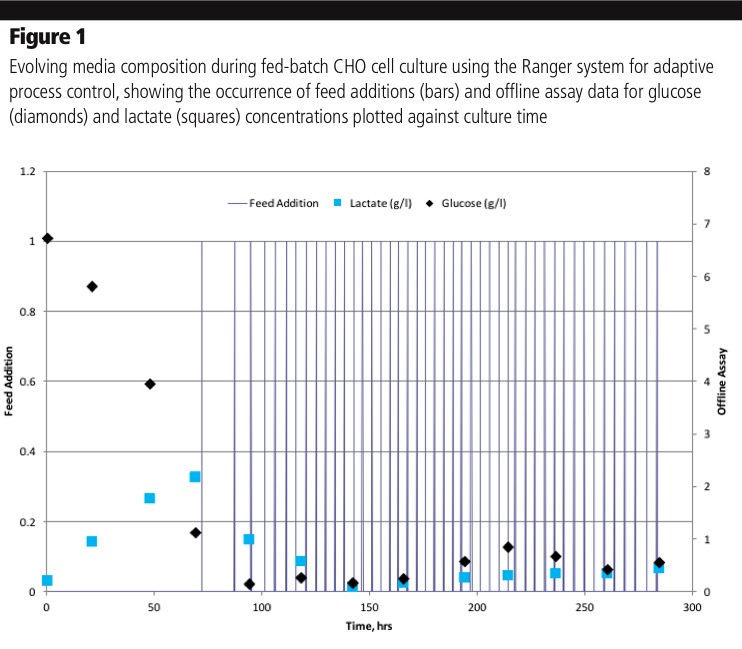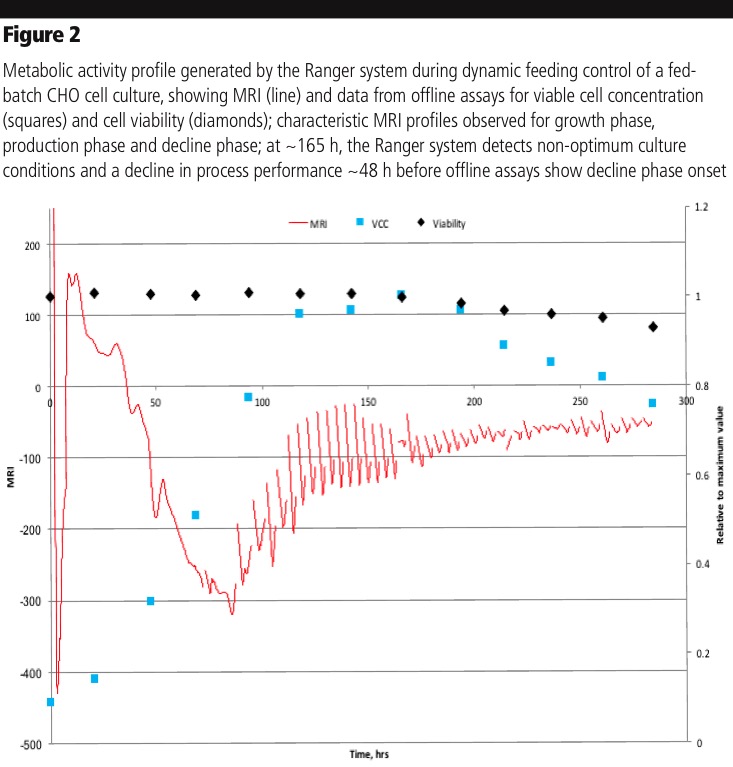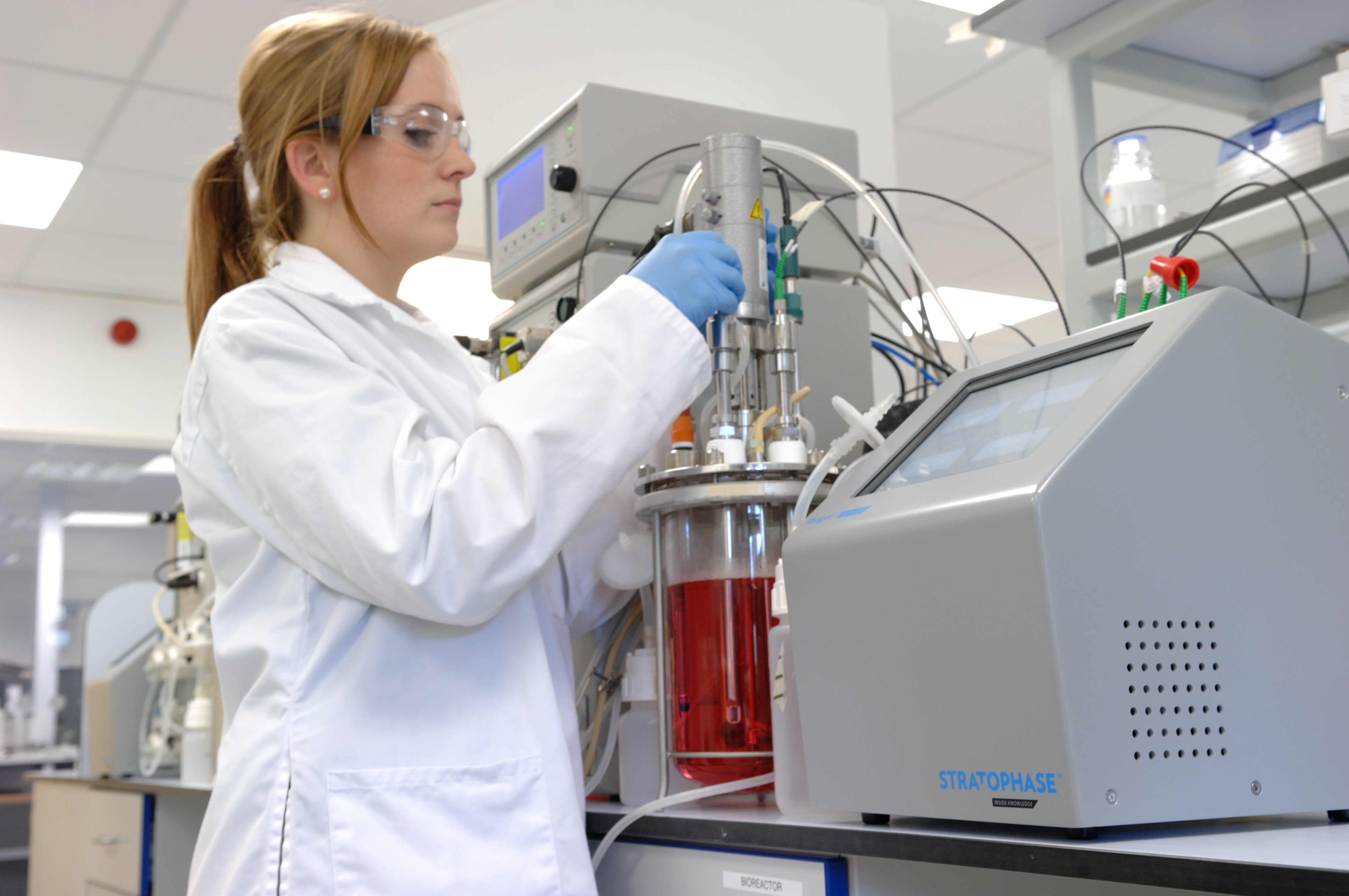There are numerous challenges facing the biopharmaceutical industry that will require a combination of innovation, creativity and objective consideration to overcome within the next 5–10 years. The cost of existing and new biologic drugs continues to escalate, which is arguably reducing the market size because many payers either cannot or will not fund these increasingly expensive treatments. The cost:benefit calculation, in terms of life expectancy, is a harsh reality in first world markets — and it’s even more brutal in poorer countries.
To reduce the cost of biologics, such as monoclonal antibodies (mAbs) and other protein-based drugs, biopharma, including CDMOs, are looking to develop and adopt both upstream and downstream continuous manufacturing processes, thereby increasing yields through a combination of longer production run times, more stable and higher secreting cell lines and increased downstream yields at each stage of the purification processes.
The advanced — cell and gene — therapy industry, by comparison, is in its infancy and is facing similar price pressures to deliver powerful therapies while also dealing with a raft of different technical challenges to deliver treatments that are commercially viable. Although the production of viral vectors and allogeneic therapies bear a number of process similarities to “traditional” biologics manufacture, the challenge of consistently producing large quantities of GMP-grade vector remains problematic, whereas the technical issues associated with the development of allogeneic cell banks that result in high density and high viability cells upon thaw and expansion for each treatment, pose different but equally complex technical challenges.
Autologous therapy manufacturers face a new and entirely different set of challenges, as each treatment is unique. In the short- to mid-term at least, each patient donor will have been subjected to different treatment regimes, they will be suffering from different clinical diseases and they will be at differing stages of disease progression; and, as with all other treatments, each patient responds to treatment in a unique way.
For all cell-based therapies, the costs of the growth factors, cytokines and other essential media components necessary to isolate, engineer, expand and maintain the engineered cells in the required differentiated state are extremely high because these components are typically added as a bolus; there are currently no technologies to enable their addition “on demand” at different stages of the process.
New process control and analytical technologies, or “repurposed” existing technologies, need to be employed to help deliver these drugs and treatments at commercially viable price points. Like the treatments themselves, the answers are almost certainly going to lie in a combination of innovative thinking and the application of existing technologies for different applications from their original purpose. There is an undoubted need for real-time adaptive control — for both upstream and downstream processes — to enable the genuine, continuous production of biologics.
Adaptive control will be essential if we are to develop a robust and consistent platform process for the manufacture of autologous therapies at commercial scale; that is, adaptive control will be essential for the development of the autologous therapy closed system “Magic Box”.
One of the new technologies that has been demonstrated to enable rapid optimisation and ongoing adaptive control of the upstream nutrient feed for bioreactor processes is Stratophase’s Ranger. Ranger has the capability to provide dynamic adaptive control of either single or multiple nutrient feeds for bioreactor cultures based on the metabolic activity of the cells in the bioreactor, and it has the potential to provide the dynamic adaptive control necessary to establish a platform process for autologous therapy manufacture.
Adaptive bioprocess control
Metabolic activity as an indicator of cell culture performance: The adaptive process control capabilities of Ranger stem from its ability to derive the metabolic activity for a cell culture by monitoring, via relative refractive index, the real-time compositional changes in the medium as they occur. Determining the rate at which cellular action changes the overall composition enables an holistic view of the process performance to be gained.
By observing the metabolic activity of a cell culture in real-time and, more importantly, any changes in the metabolic activity, it is possible to determine the relative performance of the cell culture as it is running and control the process accordingly.

An optical sensor in situ
Case study: control of optimal glucose concentration
Changes in metabolic activity and the associated triggering of feed additions using the Ranger system have shown the ability of adaptive feeding control to optimise media composition to cellular requirements in real-time. For example, CHO cell lines commonly dictate glucose concentrations in the range of 0.1–1.0 g/L when running the Ranger system (Figure 1).
Maintenance of such nutrient lean conditions, without nutrient starved conditions occurring, has also been demonstrated to result in the consumption of lactate that typically accumulates during the batch phase of the culture, with subsequent conservation of near zero lactate levels during the feeding phase. The media composition enabled by the Ranger system results in the enhanced performance of the cell culture both in terms of informing the optimisation of feed composition and controlling it to maintain optimum nutrient levels during cell culturing.
The metabolic activity profiles generated give significant insight into the performance of a cell culture process and enable the diagnosis of conditions that result in limited process performance. Metabolic activity for CHO cell lines is typically not consistent throughout the duration of the culture, with characteristics attributable to the growth phase, production phase and the decline phase (Figure 2).
Cell culture processes can generate Metabolic Rate Index (MRI) profiles that are either positive or negative, depending upon whether metabolite/product accumulation or nutrient consumption is dominating the relative refractive index signal. In both cases, the absolute MRI is representative of the metabolic activity of the process at that moment in time. The MRI profile directly following a feed addition or change in bioreactor parameters is used to rapidly characterise the effect of that change on the performance of the process.
Tailoring feed composition and bioreactor parameters to optimise metabolic activity for growth and production phases allows maximum cell densities and specific productivities to be achieved. The detection of abnormal metabolic activity characteristics can be used to diagnose and rectify culture conditions that are detrimental to performance or as an early warning of the decline phase — thus enabling cultures to be terminated or harvested with minimum contamination from host cell proteins. Adaptive process control techniques have been shown to rapidly identify the optimum conditions required for robust and high-performance cell culture processes.


Dynamic feeding control: The majority of current cell culture processes rely on the use of predetermined feeding protocols based on nutrient requirement estimates, or the use of infrequent sampling and the offline assay of culture media to determine the concentration of key components. However, both of these techniques can lead to non-optimal feeding, with the potential for the depletion of nutrients and large swings in nutrient concentration risking the health of the cells and their ability to produce a product with the required quality attributes and titres.
An alternative to directly monitoring nutrient concentration is to monitor metabolic activity — as this is a function of nutrient concentration. Both microbial and mammalian systems typically behave according to Monod-type kinetics, which is valid for both exponential growth and steady state culture under conditions of balanced growth. The Monod relationship states that “as substrate concentration increases, the metabolic activity of an organism also increases towards a maximum.”
As a result, as long as the substrate concentration is below that which is associated with the maximum, then relative nutrient concentration can be linked to a cell’s metabolic rate. More specifically, characterising the decrease in metabolic activity associated with decreasing nutrient concentration can be used as a trigger signal for on-demand feeding.
Ranger uses the relationship between nutrient concentration and metabolic activity to dynamically control feed additions during cell culture processes. By making low volume feed additions of known composition and observing the metabolic responses to these additions, a quasi-continuous feeding regime is realised. Using such a technique simultaneously determines the optimum nutrient concentration for the process and maintains that concentration, even if the required nutrient concentration or the limiting nutrient itself changes during the process.
Process screening: A mainstay of upstream process development is the use of screening techniques to both initially select high performing clones — and subsequently determine the parameters-space that results in optimum performance — and to validate the design-space for GMP activities. The use of such techniques introduces an inherent conflict between the number of individual processes needed to generate the data required to adequately characterise a process/product and the amount of time these activities take to complete.
Recently, the use of highly automated parallel bioreactor systems and big data approaches have been employed to streamline screening processes. However, the number of individual processes required are still large, representing significant cost and the potential to generate bottlenecks for offline analytics. The application of real-time techniques, such as Ranger, offers the potential to further streamline process screening. The ability to rapidly determine the performance of a process allows analytics to be applied more selectively, thereby alleviating bottlenecks.
In addition, the use of real-time process performance indicators to rapidly identify the areas within a parameter-space that should be investigated in more detail allows a significant reduction in the total number of individual processes required to determine the optimum processing conditions.
Probing control strategy and rapid upstream process development: An extension to utilising metabolic activity during process screening is its use to rapidly determine the effect of different cell culture conditions as a process is running. This is an implementation of the well-established probing control technique in which an holistic indicator of process performance is used to control specific process parameters; it is not the specificity of the measurement technique that makes the control technique specific but the parameter that is being changed or “probed”.
Using real-time process performance indicators, combined with probing control techniques, it is possible to rapidly implement complex adaptive process control strategies that would not otherwise be practical.
Stratophase’s Ranger Service utilises the Ranger adaptive process control system to offer accelerated upstream process development. A combination of automatic and semi-automatic probing control is used to rapidly optimise the bioreactor parameters (temperature, pH, dissolved oxygen) used during cell culture and to select and control feed composition and addition rate.
A combination of Stratophase’s contract process development expertise and the rapid process optimisation offered by the Ranger system allows significant reductions in the timelines and risk associated with producing robust and high-performance cell culture processes.
Future applications
The Ranger system and the adaptive process control techniques it enables are currently being applied to streamlining process development activities via the Ranger contract service. The output from which is either an optimised protocol for use with the incumbent non-adaptive process control techniques typically used during scale-up and into GMP or a protocol that maintains an element of adaptive control through the continued utilisation of the Ranger system.
The use of adaptive process control in GMP offers the ability to tailor cell cultures within a validated parameter space to counter inherent process variability, increasing process robustness and ensuring product quality.
To this end, the Ranger system is currently being configured for 21 CFR compliance and is expected to be deployed in GMP manufacturing environments during 2018/19. The field of advanced therapies and, in particular, autologous therapies, presents a significant challenge to existing cell culture process development and manufacturing techniques. The inherent variability associated with material sourced from patients, as opposed to the stable immortal cell lines used by the traditional biologics industry, and the fact that each therapeutic dose is its own unique batch, are problems that have to be addressed. If widespread use of advanced therapies is to become commercially viable, then new techniques such as adaptive process control are required to minimise the cost of goods and to enable scalable and distributed manufacturing platforms.

New techniques such as adaptive process control are required to minimise the cost of goods and to enable scalable and distributed manufacturing platforms
Conclusion
Biologics are becoming increasingly complex in terms of therapeutic properties and the conditions required to manufacture them. The diversifying pipelines within the biologics industry present a significant challenge during process development and biomanufacturing.
A game-changing solution to such challenges is the adoption of adaptive process control techniques, enabled by innovative next generation real-time monitoring and control technologies.
The emergence of adaptive process control techniques has the potential to minimise process development timelines and increase process robustness during manufacturing. These advanced control strategies are expected to have a profound impact on the manufacture of next-generation biologics and are potentially enabling for the advanced therapies industry.




